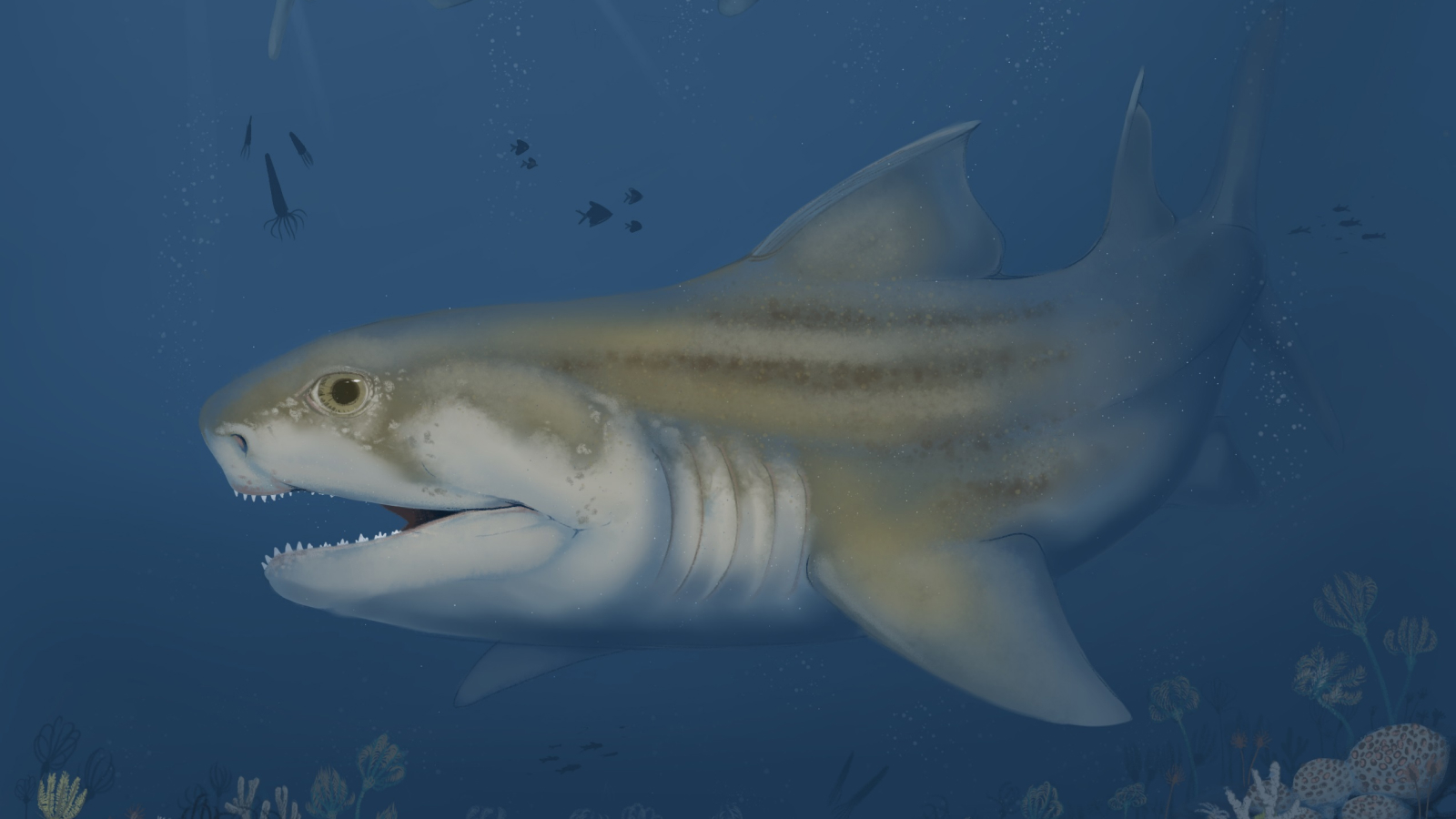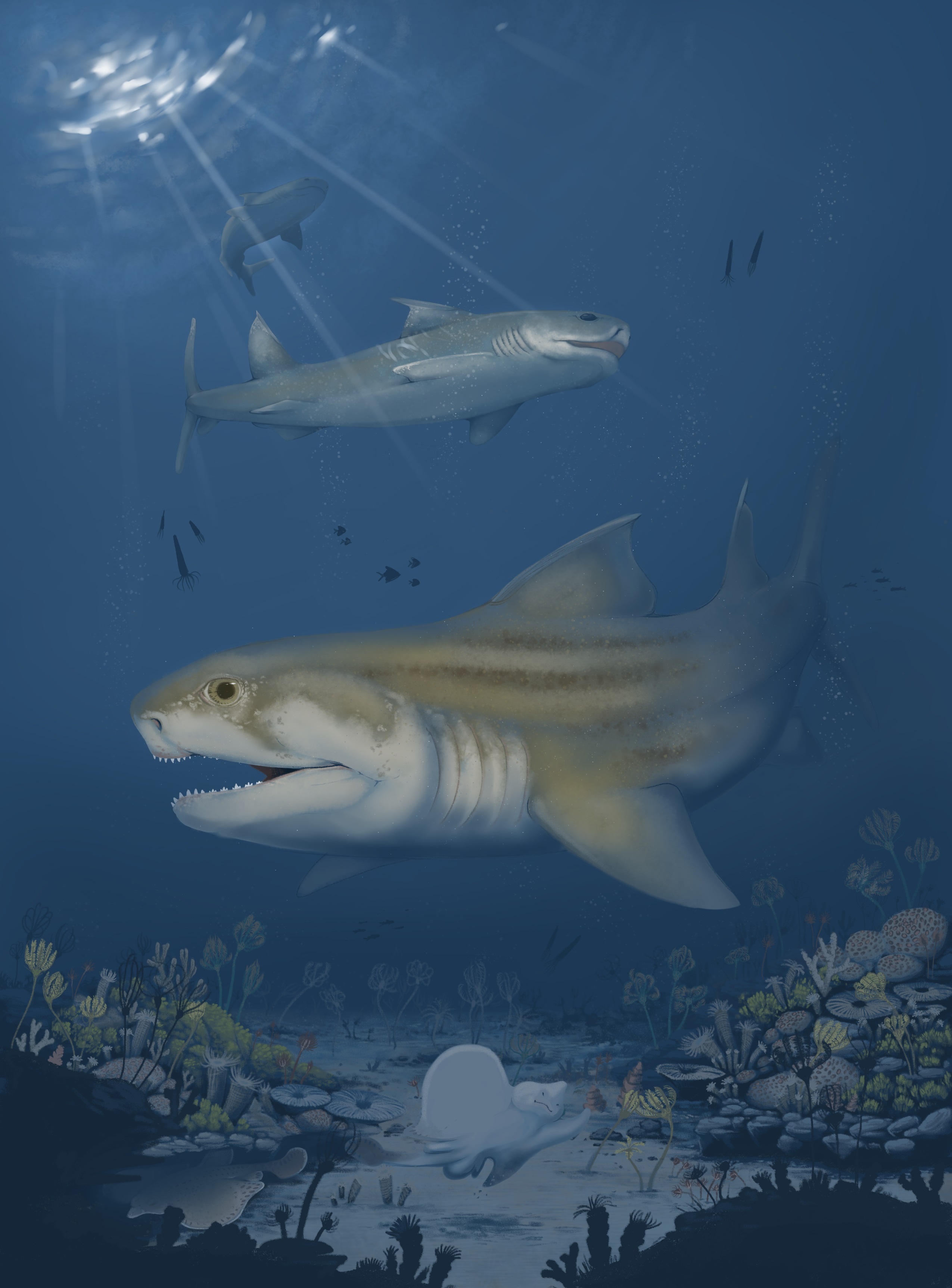325 million-year-old shark graveyard discovered deep within Mammoth Cave harbors new fossilized species
Two new ancient shark species have been uncovered in Mammoth Cave with teeth that "look like they just came out of the shark's mouth yesterday."

Two new shark species that lived 325 million years ago have been discovered in Kentucky's Mammoth Cave National Park and northern Alabama. The sharks would have lived in an ancient seaway that existed before the supercontinent Pangaea formed, locking them away in the fossil beds we see today.
The two new species have been identified as Troglocladodus trimblei and Glikmanius careforum. Both are ctenacanths, ancient cousins of modern sharks with defensive comb-like barbs on their spines.
Because the fossil specimens in Mammoth Cave aren't exposed to the elements, they are often much better preserved, and retain much more detail, than fossils found on the surface.
"In such a stable environment, those things look like they just came out of the shark's mouth yesterday," John-Paul Hodnett, a paleontologist at the Maryland-National Capital Parks and Planning Commission who works with the National Park Service's paleontology program, told Live Science.
T. trimblei is thought to have reached about 10 to 12 feet (3 to 3.6 meters) long. "They have kind of like forky-looking teeth," Hodnett said, which is the reason for the name Troglocladodus, meaning "cave branching tooth." The species name, trimblei, honors Barclay Trimble, the superintendent at Mammoth Cave, who found the first specimen in 2019.
G. careforum would also have been about 10 to 12 feet long and had a powerful bite that allowed the predator to eat other sharks, as well as bony fish and orthocones (ancient squid relatives). Hodnett said the primordial predators were "cruising around, probably behaving similar to what we see in lemon sharks or gray sharks."
Mammoth Cave is the world's longest cave system, with over 420 miles (676 kilometers) — about the distance from Boston to Washington, D.C. — of passages cut into the limestone by underground streams and rivers.
Get the world’s most fascinating discoveries delivered straight to your inbox.
Experts have been examining Mammoth Cave's lengthy passages as part of the Paleontological Resource Inventory, an ongoing survey of the fossil records in various U.S. national parks. "It turns out, they [Mammoth Cave's passages] have scores and scores of fossilized sharks," Hodnett said.

T. trimblei was identified as a new genus and species through adult and juvenile teeth in Mammoth Cave and the Bangor Formation in Alabama. To get to the first T. trimblei specimen, "you have to crawl on your hands and knees for a quarter mile [nearly half a kilometer]," Hodnett said. "And that hurts, for me, after a while."
Related: Massive graveyard of fossilized shark teeth found deep in the Indian Ocean
G. careforum was identified through teeth found at Mammoth Cave and the Hartselle and Bangor formations in Alabama. A partial set of jaws and gills from this species was also in a Mammoth Cave passage that was so small, Hodnett couldn't fit in it. Because of their fragility, the fossils still haven't been extracted.
These two shark species would have hunted close to shore in an ancient seaway connecting North America, Europe and northern Africa at the time, and where Kentucky and Alabama are located today. This seaway disappeared as Africa collided with North America and Europe during the formation of Pangaea.

Melissa Hobson is a freelance writer who specializes in marine science, conservation and sustainability, and particularly loves writing about the bizarre behaviors of marine creatures. Melissa has worked for several marine conservation organizations where she soaked up their knowledge and passion for protecting the ocean. A certified Rescue Diver, she gets her scuba fix wherever possible but is too much of a wimp to dive in the UK these days so tends to stick to tropical waters. Her writing has also appeared in National Geographic, the Guardian, the Sunday Times, New Scientist, VICE and more.


